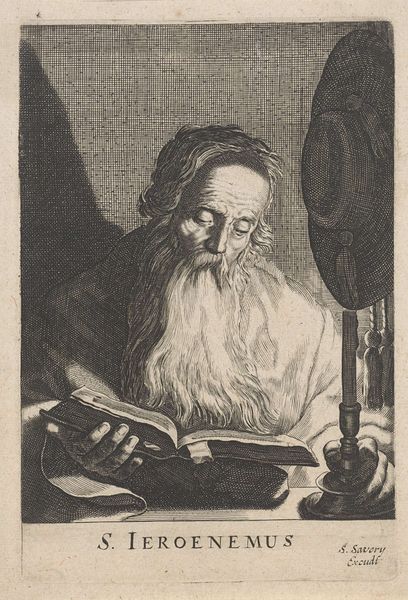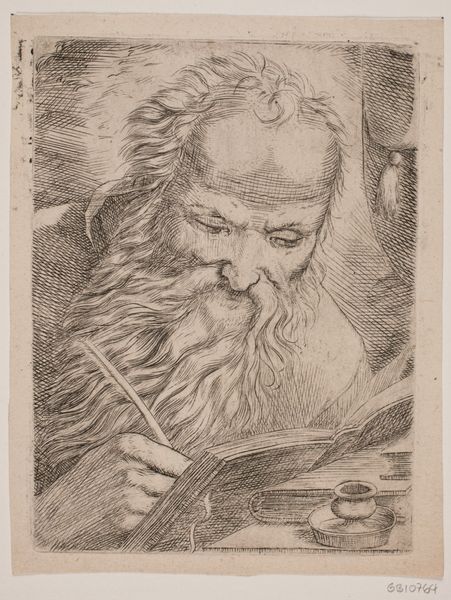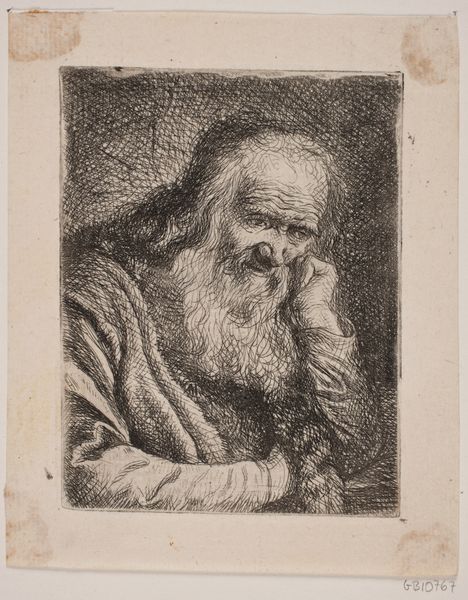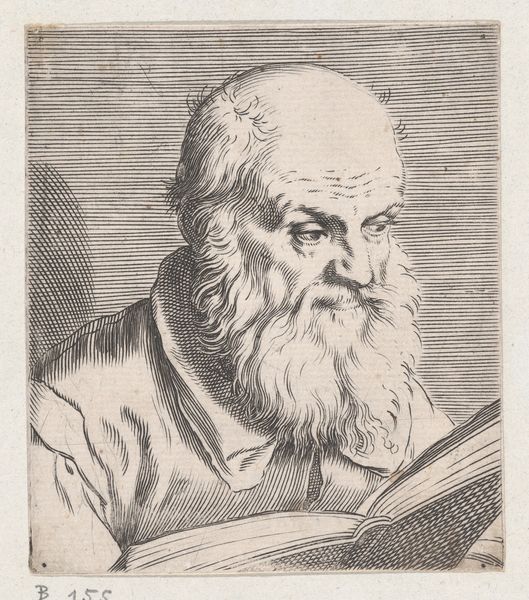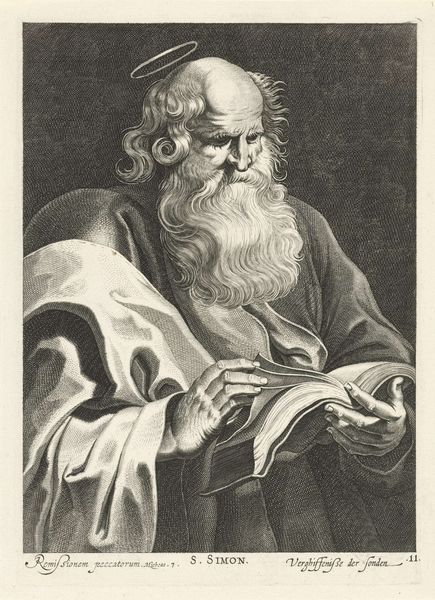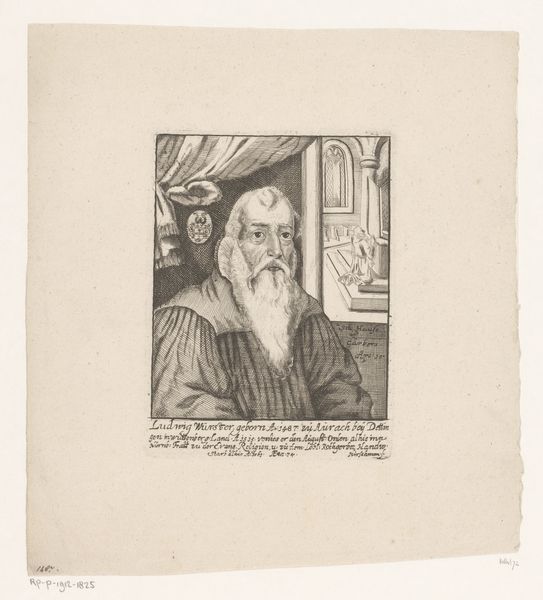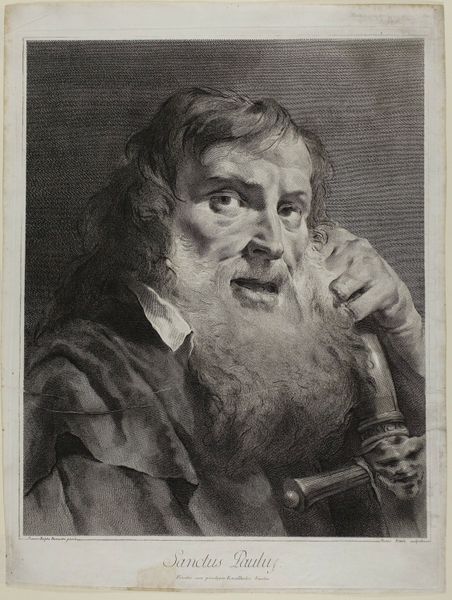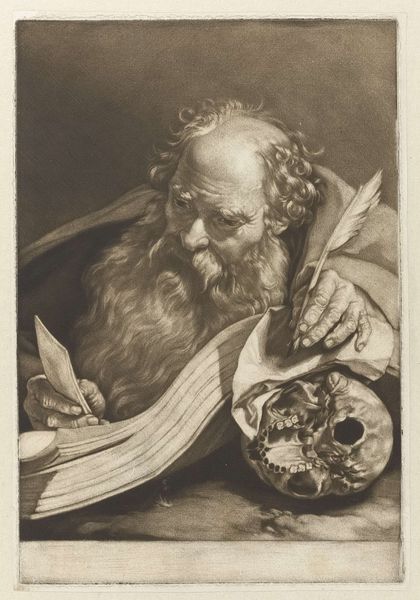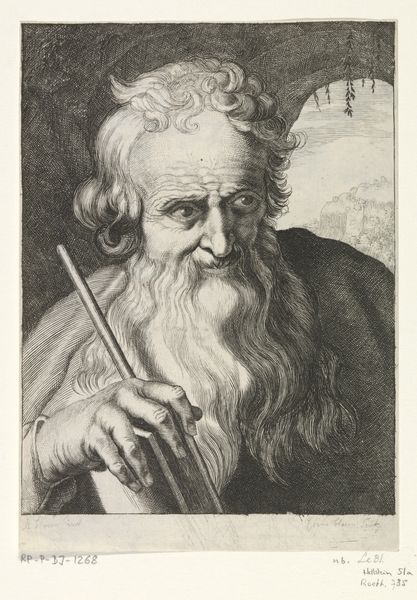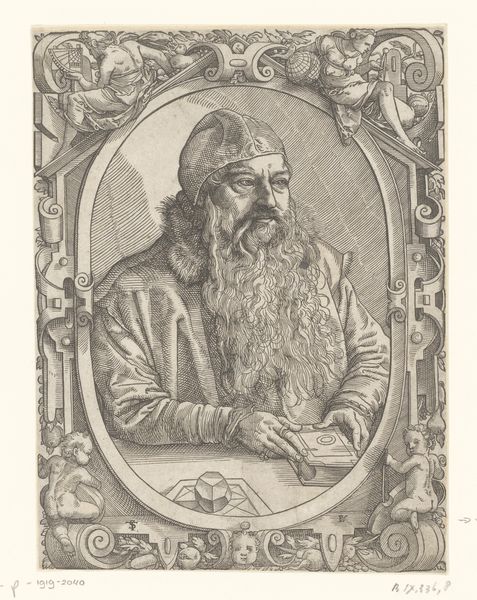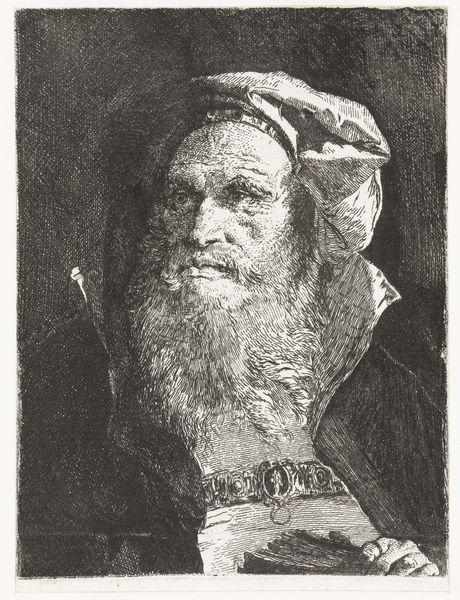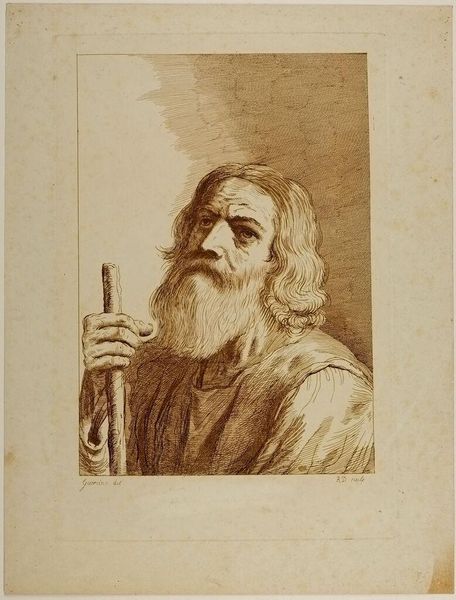
engraving
#
portrait
#
baroque
#
old engraving style
#
caricature
#
portrait drawing
#
history-painting
#
engraving
Dimensions: height 190 mm, width 137 mm
Copyright: Rijks Museum: Open Domain
Editor: This engraving, "De heilige Hieronymus," made around 1622-1630 by Cornelis Bloemaert, has this incredibly somber and reflective tone. The old man, presumably Saint Jerome, is hunched over a book, almost swallowed by the shadows. What can you tell me about it? Curator: The way Bloemaert portrays Saint Jerome, engrossed in scripture, speaks volumes about the cultural role of religious figures in the 17th century. Consider how images like these were disseminated; engravings allowed for mass production, making them accessible beyond the elite. This image becomes a tool for reinforcing religious doctrine. Do you see any symbolism, and how it might relate to the politics of the Church? Editor: I noticed the cardinal's hat beside him. That, along with his studious pose, seems to suggest a link between religious authority and scholarly work. Almost like he’s validating religious knowledge through intellectual pursuit. Curator: Exactly. Think about the Reformation and Counter-Reformation contexts. This image promotes a very specific view of Catholicism—rooted in scholarly tradition and presented to a wider public through print culture. Does it appear to be persuasive? Editor: I think the careful detail given to Saint Jerome's wrinkles and beard contrasts with the shadowed background, lending the scene a realism that probably feels authentic to the viewer. It’s powerful precisely because it makes something as abstract as religious scholarship seem very human, and, in a sense, attainable. Curator: So it bridges the gap between the divine and the everyday? Consider also the role the Rijksmuseum plays now. How does placing this engraving in a modern museum affect its original social and political function? Editor: It almost seems like by being here, on display in the museum, it invites academic rather than devotional viewing. Fascinating. Thank you! Curator: A great observation. It reflects the evolving nature of art’s purpose through time.
Comments
No comments
Be the first to comment and join the conversation on the ultimate creative platform.
